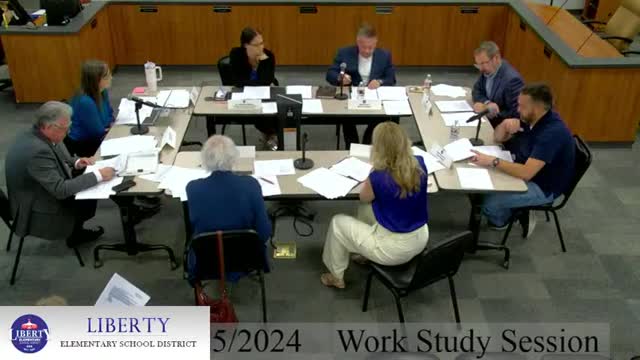Board Meeting Safety Protocols Spark Heated Debate
November 25, 2024 | Liberty Elementary District (4266), School Districts, Arizona
This article was created by AI summarizing key points discussed. AI makes mistakes, so for full details and context, please refer to the video of the full meeting. Please report any errors so we can fix them. Report an error »

In a recent government meeting, board members engaged in a detailed discussion regarding the protocols for adjourning meetings, particularly in the context of safety and order. The board president currently holds the authority to adjourn meetings without a motion, a power that some members expressed concerns about, citing potential abuse and the need for checks on that authority.
The conversation highlighted the origins of this protocol, which were influenced by the volatile nature of public meetings during the COVID-19 pandemic. Instances of unrest at board meetings in other locations, such as Vail and Scottsdale, were referenced to underscore the importance of having a clear and effective response to safety concerns. Members debated whether the language in the policy should differentiate between maintaining order and addressing safety concerns, with some advocating for clearer definitions to prevent misuse of the adjournment power.
Additionally, the board discussed the necessity of providing adequate notice for meetings, with clarification that the 24-hour notice period includes Saturdays but not Sundays, as stipulated by law. The potential for emergency meetings was also examined, with members reflecting on past experiences during crises, such as school closures due to flooding or health emergencies.
The meeting concluded with a consensus on the need for clearer language in the policy regarding agenda items and public participation, aiming to ensure transparency and adherence to legal requirements. The board members expressed a desire to maintain a balance between operational flexibility and the safeguarding of democratic processes within their meetings.
The conversation highlighted the origins of this protocol, which were influenced by the volatile nature of public meetings during the COVID-19 pandemic. Instances of unrest at board meetings in other locations, such as Vail and Scottsdale, were referenced to underscore the importance of having a clear and effective response to safety concerns. Members debated whether the language in the policy should differentiate between maintaining order and addressing safety concerns, with some advocating for clearer definitions to prevent misuse of the adjournment power.
Additionally, the board discussed the necessity of providing adequate notice for meetings, with clarification that the 24-hour notice period includes Saturdays but not Sundays, as stipulated by law. The potential for emergency meetings was also examined, with members reflecting on past experiences during crises, such as school closures due to flooding or health emergencies.
The meeting concluded with a consensus on the need for clearer language in the policy regarding agenda items and public participation, aiming to ensure transparency and adherence to legal requirements. The board members expressed a desire to maintain a balance between operational flexibility and the safeguarding of democratic processes within their meetings.
View full meeting
This article is based on a recent meeting—watch the full video and explore the complete transcript for deeper insights into the discussion.
View full meeting
